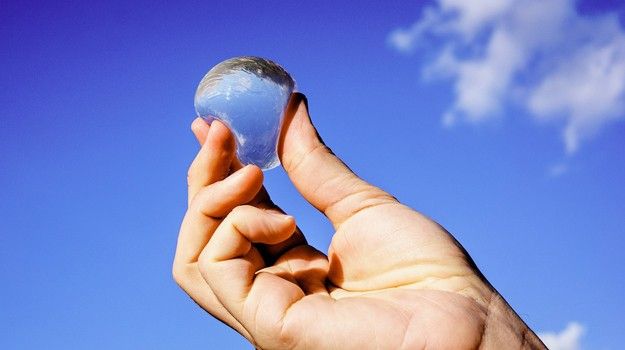UWI Research Team Developing Seaweed Water Bottles
Published on by Water Network Research, Official research team of The Water Network in Technology
A group of students at the University of the West Indies (UWI), St Augustine, is working to develop a ground-breaking product - water bottle made of seaweed.

The team, which comprises post-graduate and doctorate students at the UWI’s Chemical Engineering department, has succeeded in re-creating the famous Ooho water bottles, and is looking to develop the technology further for use in the Caribbean region.
Team leader Dr Keeran Ward said he was introduced to the product about a year and a half ago while pursuing his PhD at the Imperial College in London, where he was invited to help work on the ground-breaking new technology.
Ward said the product has far-reaching implications for the environment as the product will be using Sargassum seaweed which has been deposited in tonnes on the country’s beaches in years past.
He said the problem lies in configuring the consistency of the membrane for distribution.
“The problem with the membrane is that it ‘sweats’ a lot, so they needed to come up with a better prototype to find out how they can encapsulate other things besides water, for examplefruit juice, wine, to try to make it a bit more marketable and to encourage people to not use plastic,” he said.
The team has been researching the Thin-Film Composite Alginate Membranes for two purposes.
The first product would be plastic packaging comprised of entirely organic components which would ideally be used for conventional water bottles, replacing the traditional plastic.
These bottles, unlike typical water bottles, would decompose back into the ecosystem, reducing the problem of inorganic waste.
The second part of the project aims to create an industrial seaweed-based filter for use in waste treatment facilities which would screen out heavy metals from water such as lead, cadmium, and mercury, which are harmful cancer-causing toxins.
Dr Ward, a lecturer in Chemical Engineering, Membranes and Biopolymers at UWI, said considering the country’s recurring problem with Sargassum seaweed which accumulates every year, the product seemed like an excellent way to make use of this organic material.
“We found that there’s a lot of seaweed from the Sargassum influx which we have between April and May, and we can utilise the polymer seaweed and try to make these membranes.”
He said the team found however that the Ooho prototype is weak as a plastic.
“It’s very weak as a plastic prototype. It’s very innovative and cool, everyone likes to play with it, but if we were to actually make a bottle we’d have to come up with our own optimized prototype,” he said.
The team has since been testing the composition of the membrane in order to scale the formula up to create a plastic prototype.
Read more: Loop
Media
Taxonomy
- Drinking Water Security
- Environment
- Drinking Water
- Material Handling
- Bottled Water